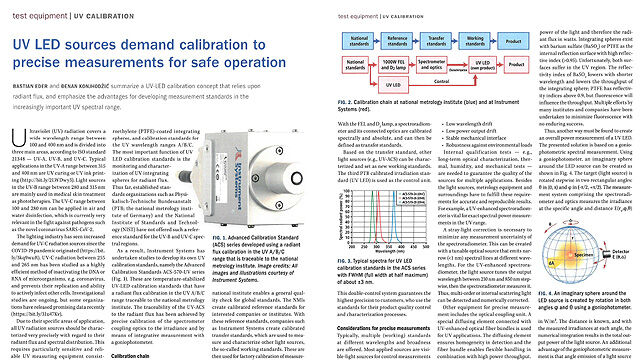UV LED sources demand calibration to precise measurements for safe operation

2020/09/14
Article by Bastian Eder and Denan Konjhodzic
Ultraviolet (UV) radiation covers a wide wavelength range between 100 and 400 nm and is divided in to three main areas, according to ISO standard 21348 - UV-A, UV-B, and UV-C. Typical applications in the UV-A range between 315 and 400 nm are UV curing or UV ink printing. Light sources in the UV-B range between 280 and 315 nm are mainly used in medical skin treatment as phototherapies. The UV-C range between 100 and 280 nm can be applied in air and water disinfection, which is currently very relevant in the fight against pathogens such as the novel coronavirus SARS-CoV-2.
The lighting industry has seen increased demand for UV-C radiation sources since the COVID-19 pandemic originated. UV-C radiation between 255 and 265 nm has been studied as a highly efficient method of inactivating the DNA or RNA of microorganisms, e.g. coronavirus, and prevents their replication and ability to actively infect other cells. Investigational studies are ongoing, but some organizations have released promising data recently.